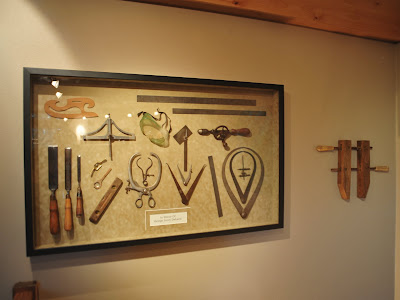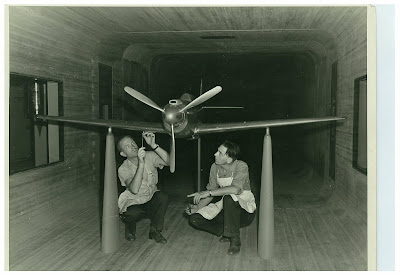
1 Feb 1904 - George Leroy DeLand - 1-Feb 1904 -- 10 Jul 1998
My Grandpa George was born to Royal DeLand and Ruby Worthen in Hunter, Utah. Living for a time in “Ragtown”, a collection of tar paper covered shacks at the base of the mountain near the copper mines west of Salt Lake City, by the time he was 15 years old, he was employed full time for the Bingham Copper Company. Soon he secured an apprenticeship as a woodworker/pattern maker, and that became his life’s vocation.
Grandpa married Dora (Simpson) in January of 1926, only to lose her less than two years later, leaving him with a one day old son Gail and a year old son Ron. On July 28, 1928 he married Lillian Griffith (grandma). They lived in Southern California until retiring to Oregon in the mid 1960’s. Grandpa outlived my mom Arlene, who died in 1987.
Grandpa’s skill as a pattern maker was well recognized in the industry. Pattern Making is the art of fashioning something out of one material, packing sand around it and creating a mold so it can be replicated over and over. A pattern that has incorrect draft on vertical surfaces, badly finished corner fillets, or a pattern that has not been finished to an ultra smooth finish may not shed sand, or otherwise work properly. While most patterns are made of plastic today, in Grandpa’s time they were beautiful works of art.
While in So. Cal., Grandpa’s skill was important in the budding aircraft industry. Working for such companies as North American, Northrup Grumman and Boeing, he worked on teams which were responsible for many of the most important aircraft in winning the Second World War. One of the most interesting stories is his work on the P-51 Mustang. While much of his time was spent on engine parts and other high tolerance portions of several airplanes, in the pictures above he is shown working in the shop in California and in the wind tunnels of Boeing in Seattle on the wing of the P-51, which had to be redesigned to provide better safety and function for the pilots serving in the European theatre toward the end of the war.
In the shadow box are several tools that I was fortunate to inherit from Grandpa. My brothers and I all got a number of tools, and many of the ones I got were used for measuring. You can see here such things as calipers, scribing tools and rulers.
One of the most interesting of them is the "Pattern Makers Rule". (There are two in this box.) The graduations are marked as: 1/30-1/40-1/60-1/80, etc. The graduations represent the amount of shrinkage allowance for different types of metals. For example, the 1/30 scale measurement typically gives the correct result with patterns used for cast aluminum items.
I have great pride in Grandpa’s skill, but my memories are of all the toys he made. The blocks, puzzles, paint boards and in general the smell of freshly cut wood and piles of sawdust remain the impressions of childhood. I am grateful for a heritage that includes many men and women like Grandpa who found joy and worthy contributions to their communities and families through the use of their hands. Rich Vial, November 2009
Here are the pictures:
